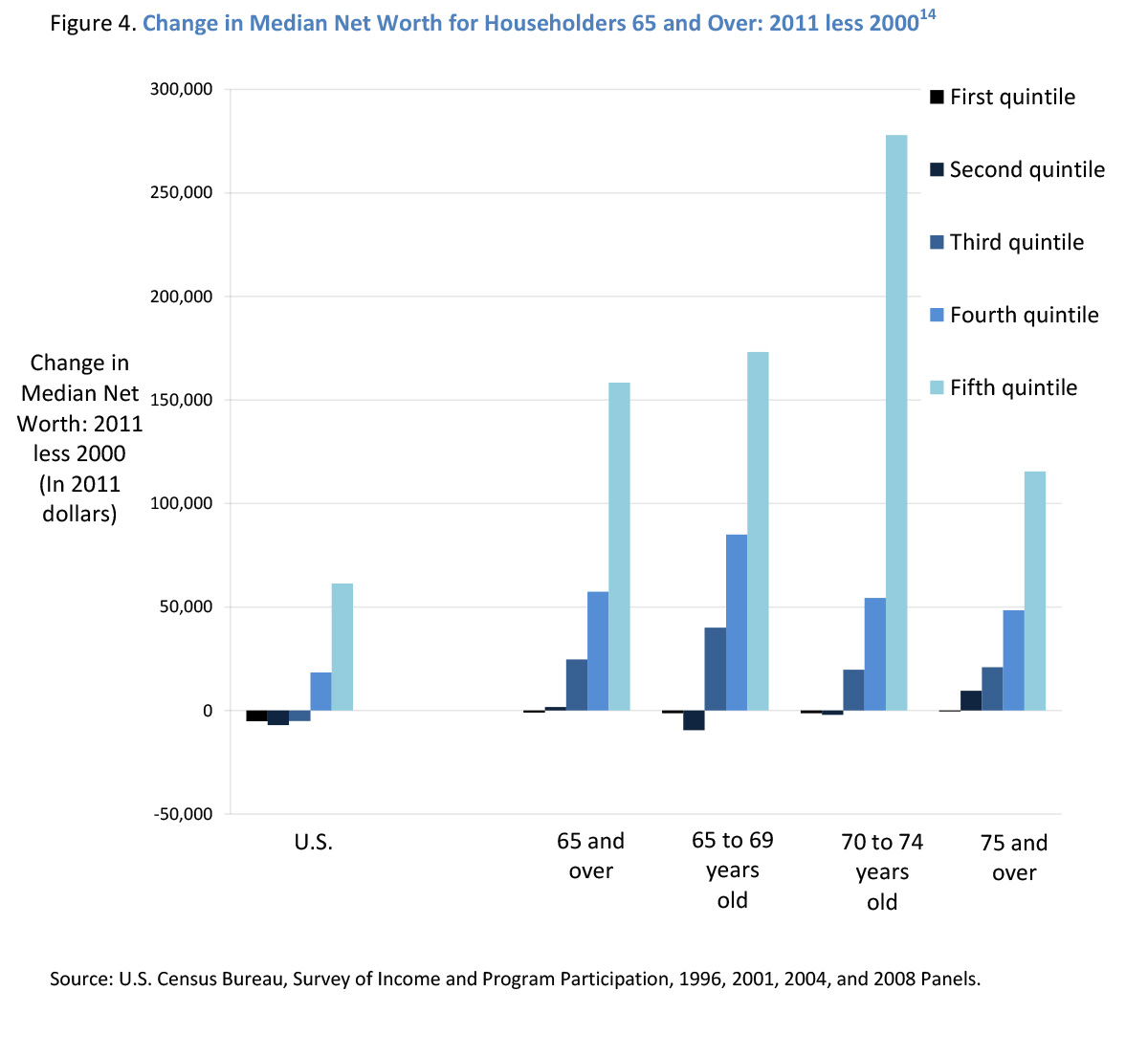Ben Brown points out the potential political upside to the aging population.
"Maybe it’s a brief glimpse, inspired by Pope Francis’s visit, of a collective will to be better humans. Or maybe it’s just the math. But I’m feeling more hopeful about future traction for arguments — and for action — for more meaningfully connected, livable communities."
"The reason why can be summed up in two charts: The first chart is the now-familiar elongation of population modeling as Baby Boomers, born between 1946 and 1964, move into the final stages of their lives. We used to characterize the generational swell Boomers created as a 'pig in the python.' These days, with the even bigger generation of Millennials, born after 1980, coming of age, the snake looks more proportional. Still, the sheer size of the Boomer generation enables it to prolong its capacity to bend trend lines over the next forty years.
"That capacity is multiplied by what the second chart makes obvious. Geezers have most of the money. Which in the pay-to-play society we’ve evolved over the last four decades, means older people — who vote more consistently, contribute more to political campaigns and have more highly developed networks of influence in business and non-profit institutions — are likely to have more clout in decision-making that touches the lives of citizens of all ages and at all income levels."

Aging population in America: Page 2, U.S Census pdf, The Next Four Decades: The Older Population in the United States, 2010, 20109 to 2050.

Census Chart of relative median household wealth by age.
"Let’s go out on a limb here and suggest that rich people’s disproportionate power has not always been a wonderful thing for the rest of us. They’ve been able to cherry-pick issues and programs that benefit their exclusive interests and use their political and economic leverage to protect and enhance their privilege."
Ben Brown goes on to delve into what's likely to change as the wealthy grow older.
FULL STORY: The Unkickable Can: Towards a ‘Livability Synthesis’

Analysis: Cybertruck Fatality Rate Far Exceeds That of Ford Pinto
The Tesla Cybertruck was recalled seven times last year.

National Parks Layoffs Will Cause Communities to Lose Billions
Thousands of essential park workers were laid off this week, just before the busy spring break season.

Retro-silient?: America’s First “Eco-burb,” The Woodlands Turns 50
A master-planned community north of Houston offers lessons on green infrastructure and resilient design, but falls short of its founder’s lofty affordability and walkability goals.

Test News Post 1
This is a summary

Analysis: Cybertruck Fatality Rate Far Exceeds That of Ford Pinto
The Tesla Cybertruck was recalled seven times last year.

Test News Headline 46
Test for the image on the front page.
Urban Design for Planners 1: Software Tools
This six-course series explores essential urban design concepts using open source software and equips planners with the tools they need to participate fully in the urban design process.
Planning for Universal Design
Learn the tools for implementing Universal Design in planning regulations.
EMC Planning Group, Inc.
Planetizen
Planetizen
Mpact (formerly Rail~Volution)
Great Falls Development Authority, Inc.
HUDs Office of Policy Development and Research
NYU Wagner Graduate School of Public Service



























